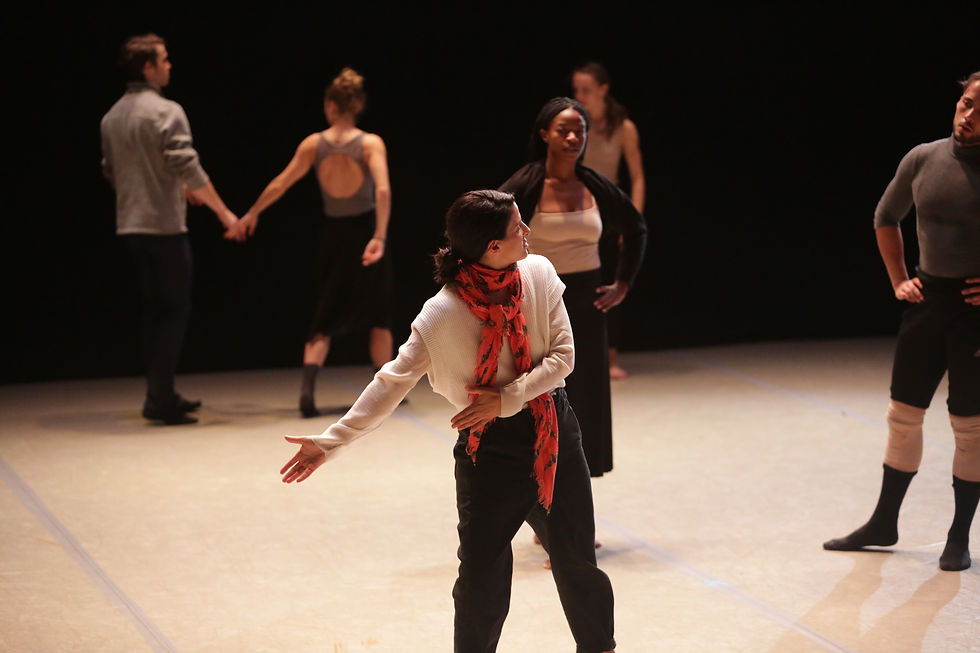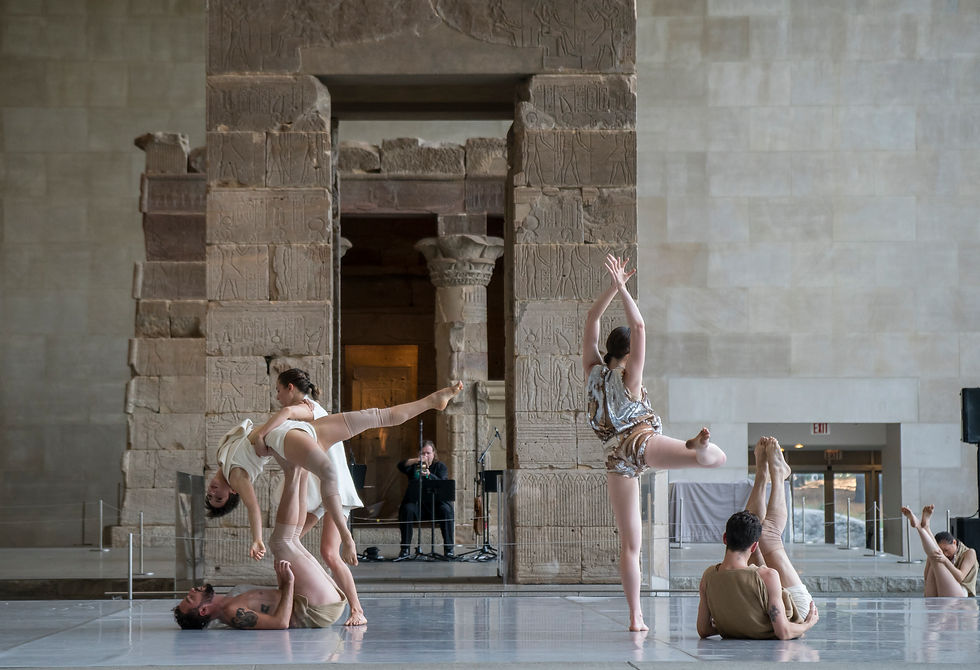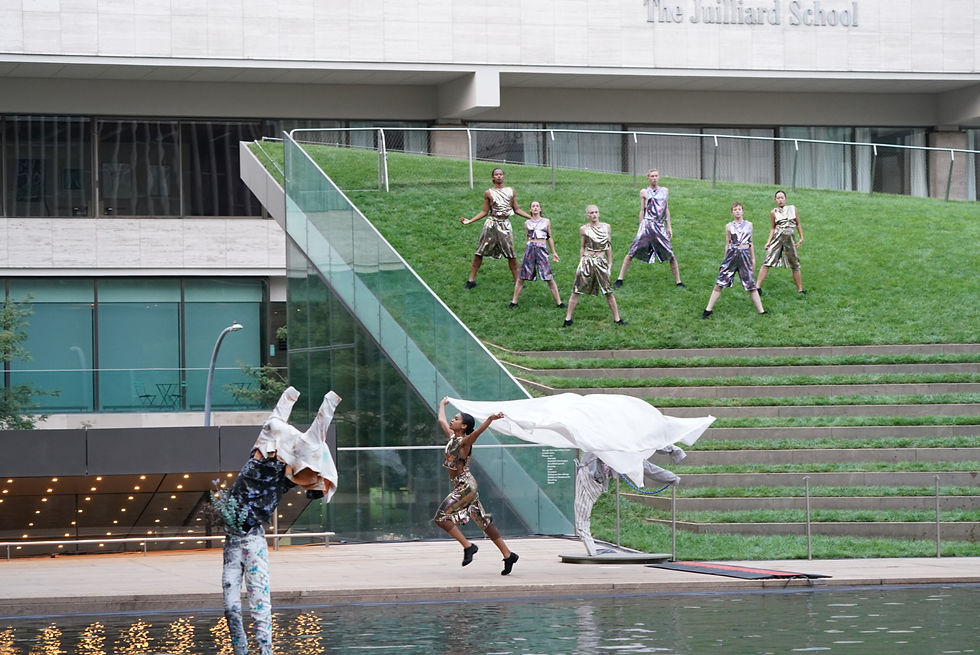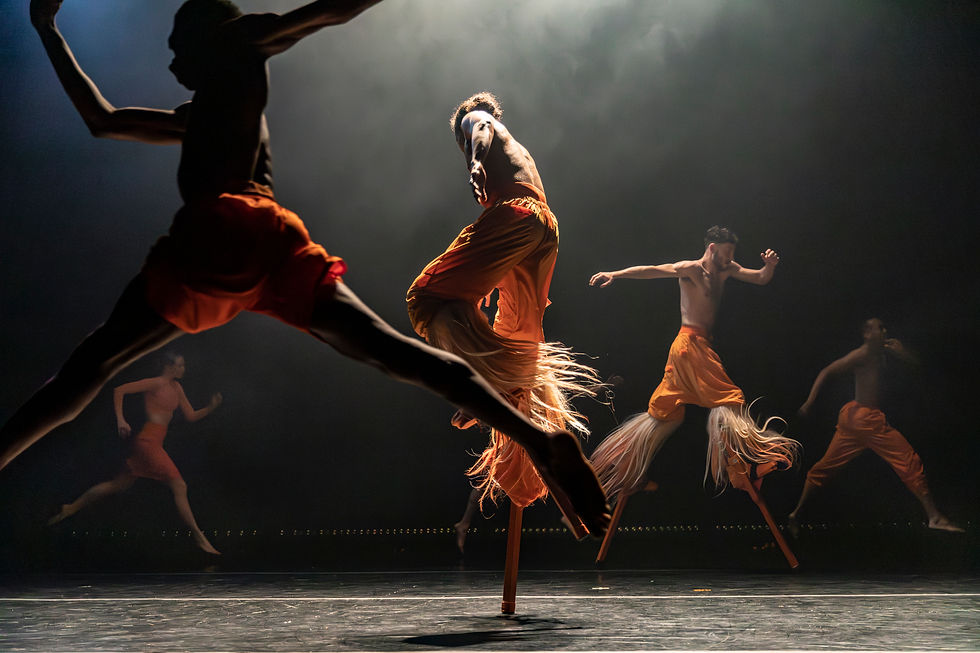1999 Scholarship Winner, Andrea Miller, Now An Internationally Acclaimed Choreographer - by Ethan Richmond
- shorelinearts
- May 27
- 7 min read
Since 1981, Shoreline Arts Alliance has championed Scholarships in the Arts, a juried scholarship competition for high school juniors and seniors. In its 44 years, this program has awarded over 400 scholarships to students throughout the 24 towns we serve. This article is part of a series of interviews conducted with some of our
scholarship winners...

Andrea Miller, originally from Branford, CT, is an internationally acclaimed choreographer and the founder and Artistic Director of the Brooklyn-based dance company GALLIM. She is also a dance educator, prolific collaborator in fashion, film, theater, and tech, as well as a Guggenheim Fellow, Princess Grace Foundation Fellow, New York City Center Fellow, and more. In 1999, as a senior in high school, she won a scholarship in dance from Shoreline Arts Alliance.
When I asked her about it, Andrea said, “It meant a lot to me. I do remember it very clearly.” She was very moved by the recognition because of how community is typically built around sports in our school systems here. She remembers always leaving school to go to her very small dance studio with only three or four other dancers. She never experienced that large, collective spirit through athletics that forms connections. “Acknowledgment that what I was doing was meaningful or celebrated by my community was very powerful and impactful to me.”
Growing up, Andrea trained in the very early modern dance form of Doris Humphrey, which arose in the ‘30s, ‘40s, and ‘50s. “She was a pioneer of modern dance, and I think by learning about her and studying her life and her work, I learned that choreography is like a job. It's work and it's an art form that a woman could be very successful in… It was really inspiring to me and at that point I said I want to be a choreographer.” She was 11 years old.
Andrea went to Choate Rosemary Hall for high school which, at the time, had no dance program. Instead, she had to find training outside of school. This is why, when she applied to The Juilliard School, she thought it was a reach. “Most people who go there go to performing arts high schools. They're dancing for six hours sometimes in a day and I was dancing three days a week for like two hours.” However, she got in. Juilliard was a tremendous challenge because she didn't have the kind of exposure that many of her peers had to ballet, jazz, and tap. She was exclusively a modern dancer. “But anyways,” she laughed, “I cried my way through it and I got into a company.”

After graduating, Andrea danced abroad at The Batsheva Dance Company for two years, a company she discovered during her time at Juilliard. “I found it to be absolutely totally my dream… the way that they worked, the way that they think about movement, the way they think about art.” She learned a lot overseas, and when she returned to the States, she
decided to start her own company in 2007, GALLIM. “While I was there it kind of reaffirmed my feeling that I wanted to choreograph and not be a dancer even though it was a good experience. I was like ‘I just know for sure that my path is to make dances.’” At first, she made pieces with friends or small groups of people she knew. Eventually, when she had enough work to submit to a competition and was selected, she was offered the opportunity to make a full evening piece and given a week in a theater. “That's just where it all kicked off.”
As she began explaining her journey as Artistic Director, I learned that the work of starting one’s own dance company is twofold. “There's a part of working as a choreographer that is the art form, that is the craft, that is rehearsing and becoming clear about what your voice is, but then there's a huge element which is being an entrepreneur of a small business. Running a small business and learning how to professionalize your art form, have a staff, grants… So I think that it's been a process of of course growing as an artist, but also being a businesswoman.”
As for the artistic aspect, Andrea parsed for me her inclination to be a choreographer. “As a dancer, I felt there were less opportunities for me to explore the art form. I wanted to try different things, do different things, be and move in different ways. But maybe that wasn’t always useful for the choreographer. I felt there was a limitation to what I could do, so I think that I just didn't feel seen in terms of what I could bring to the table, what I could offer. I felt much more realized as a person when I was making my own work.”

As someone very interested in the intersection of performance with museums and visual art, I was excited to hear about Andrea’s creative process. Among her many achievements, she was the first ever choreographer named artist in residence at The Metropolitan Museum of Art, creating a site-responsive performance for The Temple of Dendur. GALLIM also recently performed at the Institute of Contemporary Art in Boston, and in the past they have performed at The Met Breuer and The Guggenheim Museum. In addition, she just presented a full-length version of her critically acclaimed piece WONDERLAND in November at The Joyce after it first premiered fourteen years ago as a half-evening work. The dance is inspired by Chinese-born artist Cai Guo-Qiang’s installation Head On. “Visual art is like my church,” she began, laughing. “Where I go to pray to the gods of art to teach me what I'm supposed to do, what I'm supposed to know. It's home center for me.”
She continued, “I actually wanted to be a painter early on in high school. That's not my medium, but I definitely felt its power in a personal way when I was younger. Since then, I've always been guided by visual artists in many ways, and it's influenced almost every single piece of mine.” She told me she’s had the opportunity to work with some incredible artists lately like the work of Sir Anthony Gormley, where she was able to create a performance response to his recent installation AERIAL at White Cube New York. The year before, the British sculptor Dame Phyllida Barlow conceived a work for her piece for the English National Ballet. “Visual art has become not just something secondary that I go to in a research phase, but also has thankfully become something where I can engage with artists and collaborate with artists as much as possible. The more the merrier for me.”
“In a way,” I offered, “I guess the stage is a canvas and your dancers are the paint, right?”

“Yeah of course,” she agreed emphatically. “Absolutely, absolutely. I do think performance and visual art should be much more explored than it is. I think that, especially in this information age, and with the influence of new technologies, the human body, embodiment, and presence of the body are really, really essential aspects of the same things we look towards painting, sculpture, or other mediums of visual art for. The body should be more of a part of those ideas shared in the spaces of museums and galleries.”
When Andrea begins a choreography project, before even being in the studio, she has a substantial research period of reading, online research, and going to museums and galleries. “I'm trying to fill myself with this sort of constellation of subjects that I think are part of this specific–I don’t know–galaxy or whatever the metaphor constellation is.” She laughs. “But I try to fill myself as much as possible with the ideas that surround a subject matter that I know I want to explore.”
“And how do you know when a dance is finished?” I asked.
“It's never finished,” she said without hesitation. “No, it’s never finished, especially if it's a really good dance, then I constantly wanna explore more and learn more about it and stay within it.”
In response to my asking if this was her experience with re-presenting WONDERLAND over a decade after its premiere, she said, “It was wild because it's a subject matter that I was relating to or responding to from 2010 and it felt wild to see how much it continued to feel relevant.” On GALLIM’s website, the piece is described as one that “chases after the insidious methods of pack mentality—animal instincts, colorful appetites and social terrors at once… Although pack mentality is a natural and ongoing strategy in the animal kingdom, among humans it can indicate a vicious, desensitized brutality and disregard for humanity.” Andrea continued, “It felt wild to kind of map what seems timeless and what needed editing, but I decided not to edit too much because I also think this is something that dance really doesn't get to do, which is to see the continuum of an artist, to see their whole process, their practice expressed in these works. And so if I keep editing it, that opportunity to reflect on how I made work as an artist at that time disappears. I wanted to keep it as it was.”

From Shoreline Arts Alliance in Madison, CT to across the globe, Andrea Miller has instilled herself as a significant and admirable artistic presence in dance. Experiencing her artistry for the first time in person and the embodiment she essentialized during our conversation, I am even more grateful to have had the opportunity to bask in Andrea’s reflection on her own creative journey. On April 26th, I had the privilege of witnessing her choreography at The Joyce in collaboration with A.I.M. by Kyle Abraham. YEAR is brilliant, visceral, arresting, and beautiful in ways I am still comprehending, yet still fully feeling. As it interrogates stamina, it, too, intimately pierces a human capacity for empathy that swelled collectively throughout the audience during the 30-minute piece and poured onto 8th Avenue after its conclusion. I look forward to everything she and GALLIM do next, and I am thinking deeply about the message she left me and any other aspiring dancers, choreographers, and artists:
“I think that sometimes when things feel like failures or mistakes, the instinct is to think that something's wrong. And I think it's helpful to remember that nothing's wrong; this is actually what it looks like to be an artist. To make mistakes, to make failures. So you can't use that as some sort of guide or information that you're doing something wrong, that you should stop, that you should move away. Instead, what's there to grow from? So just keep going and dig. Roll up your sleeves and dig deep, because it's gold down there. But it takes an effort. It really takes an effort. But if you're up for the effort, it's a beautiful life.”



Comments